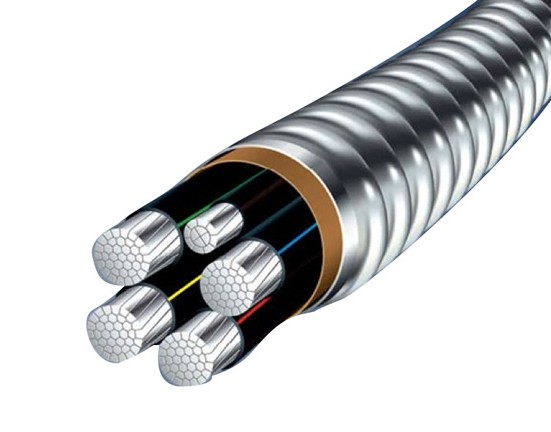
An AAC conductor is a kind of cable with more stable chemical properties.
AAC conductor is also known as aluminum stranded wire. It is made from electrolytically refined aluminum with a minimum purity of 99.7%.
Concentric stranded aluminum conductors (AAC) are made of one or more hard-drawn 1350 aluminum alloys stranded together.
These conductors are used in low, medium, and high-voltage overhead lines.
AAC is widely used in urban areas, where spans are usually short but conductivity requirements are high.
The excellent corrosion resistance of aluminum makes AAC the conductor of choice for coastal areas.
AAC has limited use in transmission lines and rural power distribution due to its relatively poor strength-to-weight ratio because of the large spans used.
All aluminum conductors consist of one or more strands of aluminum wire.
Its working principle is very simple, that is, when the air is in contact with its surface, the surface will oxidize to protect the AAC conductor.
From this working principle, it is not difficult to see that AAC cable is a kind of cable with high corrosion resistance, and its service life is greatly improved.
In terms of economy, the cost of AAC conductors is lower, much lower than that of copper core cables, and the cost of installation and procurement is not high.
Judging from the operation of projects that used AAC conductors in the past, AAC conductors can guarantee absolute safety during installation, and so far there has been no safety failure during installation.
This is because AAC conductors have excellent creep resistance and flame retardancy.
Aluminum alloy can enhance the tensile strength of aluminum, and AAC conductor can support a weight of 4000m in length, which has obvious advantages in long-distance and large-span buildings.
The bending performance of aluminum alloy is outstanding, and its materials and processing methods make it more flexible.
The flexibility of aluminum alloy is 30% higher than that of copper. The bending radius of aluminum alloy is much smaller than that of copper cables, making AAC conductors more advantageous in cable end connections.
A copper rod is 3.5 times the price of an aluminum rod, and the specific gravity of copper is 3.3 times that of aluminum, so the aluminum cable is much cheaper than copper cable, suitable for low capital projects or temporary use of electricity.
Aluminum in the air and oxygen reaction quickly generates an oxide film, to prevent further oxidation, so the aluminum wire is a high voltage, large cross-section, large span overhead transmission of essential materials, but used as a low-voltage line these advantages no longer exist.